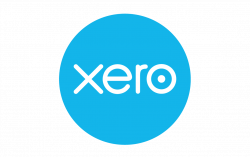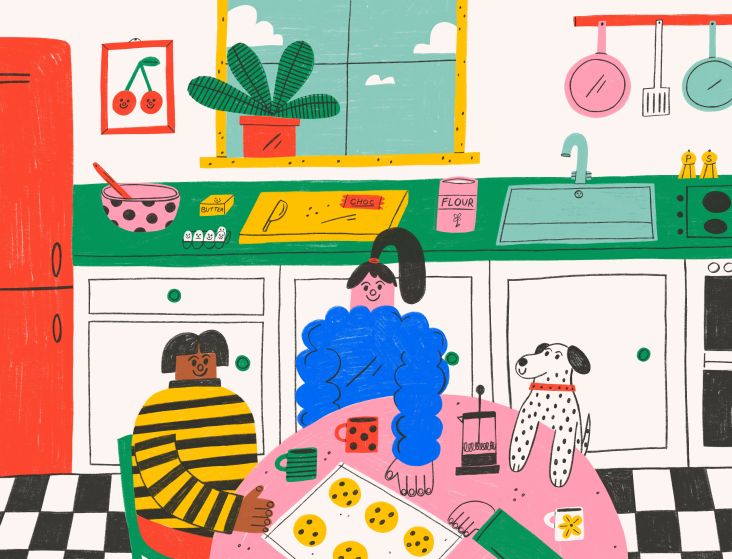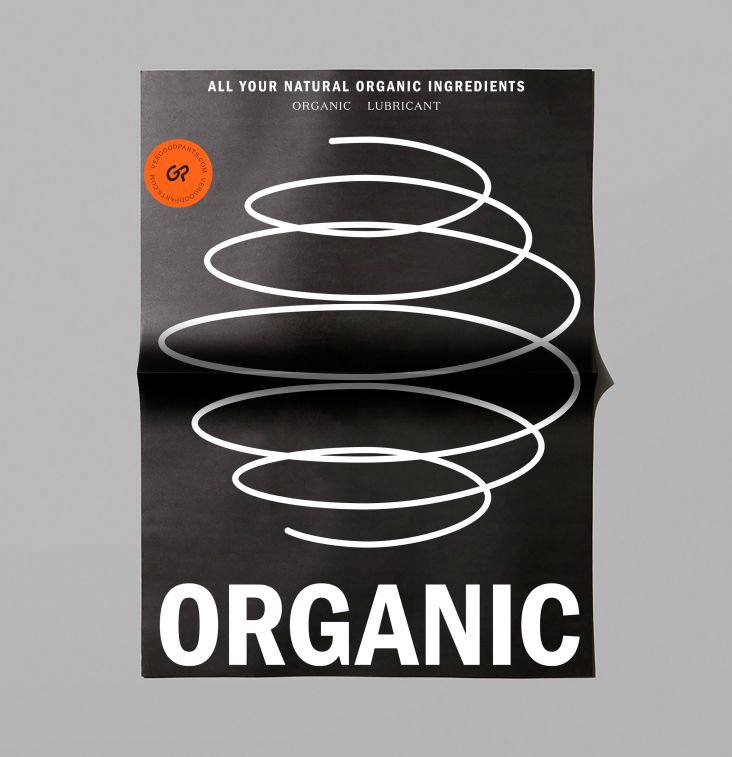How to deal with invoice disputes
As creatives, we put our heart and souls into our work. Not to mention the majority of our time and energy. So when months go by without any payment, with clients either stalling or outright refusing to pay, it can be hugely dispiriting, to say the least.
 for Creative Boom. © Creative Boom](https://www.creativeboom.com/upload/articles/88/885afc2954af947d8d1957fb08e948aeef15dae7_1280.jpg)
Illustration by Abbey Lossing for Creative Boom. © Creative Boom
The good news is, there are ways you can get invoice disputes resolved more quickly and, even better, methods you can apply to prevent them from occurring in the first place. For this article, we've teamed up with online accounting software provider Xero, who help freelancers automate and manage their finances from just £10 per month, to help you get paid on time and without any hassle.
We'll start by looking at some common reasons why invoices get forgotten or delayed. Then we'll go on to explain how you can reduce your risk of non-payment, and ensure invoices get paid properly in future.
Common reasons why invoices get forgotten or delayed
1. The invoice didn't reach the right person
People at your client's workplace are busy, and mistakes are made. So don't necessarily jump to blame the accounting department. "Sometimes late payment means the creative director forgot to forward the invoice on," points out creative recruiter and D&AD judge Nikky Lyle. "For this reason, I always call a week before the invoice is due and have a friendly chat with accounts to check they've received it and that it will be included in next week's payroll. That always works for me."
2. You didn't complete the invoice properly
Often your unpaid invoice will be sitting on someone's desk because it's missing a piece of vital information, such as a purchase order number, and can't be processed. Yes, someone should have contacted you and chased this up, but there are so many hours in the day, and things get forgotten. Or maybe they emailed you, and it went to your spam folder. Either way, this kind of error is much more likely to happen if you create your invoices yourself in Word, rather than use automated accounting software such as Xero, which will ensure everything's in place before filing an invoice.
3. You didn't agree with everything properly beforehand
Another reason why your invoice might not have been paid on time is that you and the client have a very different view of what they owe you. For example, you may have assumed that the price you'd agreed on for the work didn't include VAT, but they may have assumed it did. For this reason, all these little details must be hammered out carefully beforehand. And of course, this agreement needs to suits both parties.
"I make sure I communicate with the client at the contract stage to find what works for them," says Dee Primett, a copywriter and content creator. "For instance, one client gets paid mid-month, so we've agreed for me to deliver work and the invoice by 10th, so she has time to check, approve and pay."
4. You didn't keep everything in writing
It's natural to assume that if you've discussed something over the phone or on a Zoom chat, it's set in stone. But your client's recollection of that conversation may be different. So once you've agreed on something in person, always follow it up with an email restating what you've agreed. "I try to be as clear as possible with setting boundaries at the beginning of a project, including talking about payment terms, setting up a payment plan if needs be, and late fees are a godsend," says designer and illustrator Jo Cherry.
How to ensure your invoice gets paid
1. Use online accounting software to keep track
Want to ensure your invoices get paid like clockwork? Then it would help if you invoiced like clockwork, too, using online accounting software like Xero means you can send customised quotes and invoices immediately from your mobile, laptop or tablet from wherever you are.
This will hugely reduce your likelihood that payments will be missed. And of course, it makes managing all your finances much easier overall, saving you time and energy you can put into your creative work instead. So with Xero's Starter plan costing just £10 a month, this means it more than pays for itself.
2. Understand what your client needs
Being a creative freelance is all about understanding your client's business and crafting work that meets their needs. So it would help if you did the same thing when it comes to their finance system too. For example, is there a PO (purchase order) number you need to include on your invoice? Are they set up to deliver money to the place you ask for, whether that's PayPal or an international bank account? Does your preferred due date ally with the times of the month the company normally sends out payments?
In short, it's useful to get to know the accounts dept of your client, and how it works. As graphic designer Grace Abell puts it: "A phone call to the right person in accounts never fails." Copywriter Kendra Futcher agrees, noting that: "Making contact with a finance person from the start, as opposed to a generic email, and setting out my stall seems to pay off... literally!"
3. Agree on terms of payment before the work begins
You can set your own payment terms, such as discounts for early payment and payment upfront. But unless you agree on a payment date, the customer must pay you within 30 days of getting your invoice or receiving the goods or service.
However, every client is different – some might have a different way of doing things. It's worth setting out how and when you'll get paid before proceeding with any work.
4. Have chasing system in place
It would be nice if generating invoices and delivering them was all you ever needed to do. But we live in the real world, and chasing clients to pay is a necessary practice if you want to keep your payments on track. Xero can help you automate this process, allowing you to save you a lot of time and energy and ensure you never forget to send regular reminders.
Automating reminders also has the added attraction of de-personalising the process. After all, however politely you think you've written a reminder email, words can be misinterpreted, and sometimes people can feel 'under attack'. In contrast, the anonymity of automated software feels much more business-like and non-personal.
5. Make things simple for the client
Every client has a different process, but one thing unites them all. The clearer your invoice and associated communications, the better. Again, this is a good reason to use Xero, as it will pare everything down to the minimal, essential information to make everything nice and simple for all concerned, and ensure you have a record of everything all in one place. You can also customise invoice templates in Xero by adding or editing a branding theme or uploading your logo, which gives a professional touch and keeps everything consistent and easily recognisable as from you.
Reduce your risk of non-payment
1. Ask for deposits upfront and staged payments
Ask any creative freelancer how to avoid non-payment will be the same: asking for payments in advance. "Always take a deposit!" urges web designer Paul Jardine. "Structuring payments, so you get paid upfront before each phase of a larger project has been useful for me. If a job does come to a halt, at least payment has been made for the work completed, so it's fair for both parties."
Content, PR and strategy guru Ben Veal takes a similar line. "Being open and clear from the outset about how you work and your expectations are the best approach, in my experience," he says. "Set short payment terms, allowing for a margin of error and if there's a big-time investment required from day one, don't be shy about asking for 50 per cent upfront."
And of course, there's no reason you can't ask for more than that. "I invoice 100 per cent at the beginning of the month," says social media manager Terya Sarrucco. "Work does not start until payment has been received. This is quite effective: I never do work that doesn't get paid for. And nobody has ever objected."
2. Make the due date clear
Many freelancers will include a demand on their invoices such as 'must be paid within 30 days', without making it clear when that 30 days starts. So it saves everyone a lot of time if you can put that down in black and white. "I always put the 'due by' date on the bottom of invoices, rather than just the terms," says Dee. "That way there can be no confusion over business days, etc. This is the date the money needs to be in my account by." Illustrator Cat Finnie does the same, and notes: "I put this at the top, in bold, all caps. It's nearly the biggest thing on the invoice."
3. Incentivise the client
Everyone responds to incentives, and the carrot can sometimes be more effective than the stick. So consider how you might incentivise your client to pay on time. For example, filmmaker Brett Chapman reveals that: "Something I've done in the past is offer a small percentage discount on my invoices for payment within five working days. It shouldn't have to be that way, but I've had success with it."
4. Include a usage clause
One of the most common ways creative freelancers encourage prompt payment is by specifying that work (such as an illustration) cannot be used until it's been paid for. "Called a usage clause, this should go in the terms and conditions on your estimate and invoice, and basically makes it illegal to use your work until they've paid for it," explains Chris Page, owner of illustration agency Jelly London.
5. Be persistent
When dealing with problem payers, it can be tempting to let it go. But as all experienced freelancers will tell you, persistence will pay off in the end. "Just keep chasing with a polite but firm tone," advises writer, PR and marketing professional Carolyn Hughes. "I've dropped into people's offices before now when I've been concerned about getting no response. That seems to work, funnily enough."
Freelance illustrator Andra Badea agrees. "Calmly staying in touch, and kind but firm reminders have done the trick for me so far," she says. "It usually helps if they also plan on working with you in the future and you're both keen on maintaining a good working relationship."
Even if they're not, illustrator and designer Rachel Camacho-McKee believes you should always remain calm and professional. "I stay firm with communication, but I don't ever use an accusatory tone," she stresses. "I make sure my client knows when the due date is and ask if there are any hurdles financially. I want to make them feel like I'm on their team because I am - but also, pay me!"
Conclusion
Talk to freelancers up and down the creative industries, and the same message keeps coming back. Yes, getting paid on time shouldn't be an issue. But in the real world it is, and hiding away from the problem won't help.
Instead, it would be best if you took action, by nailing down an unambiguous and comprehensive agreement at the start of your client relationship and then keeping on top of invoices for each commission.
Online accounting software such as Xero can help with this, by streamlining the creation and sending of invoices and automating the chasing process for you, leaving you to focus on what you do best: the creative work itself.
Get Xero for half price
Xero is already great value, but we've teamed up with it to offer an amazing 50% off its Starter plan (normally £10 per month) for four months*. That means for your first four months, you'll pay only £5 per month, and after four months it'll be just £10 per month. Xero's Starter plan has been designed with freelancers and creatives in mind and is really easy to use. To take advantage of this generous offer simply sign up here.
*This offer cannot be used in conjunction with any other offer, and is available until 31 March 2021 for new Xero Starter subscriptions in the UK and is subject to Xero's Offer Details. Your discounted Xero subscription commences on the date you sign up for the offer and ends at midnight, four calendar months after your sign up date. You will automatically be billed the full price for your Xero subscription after the offer period ends.

























